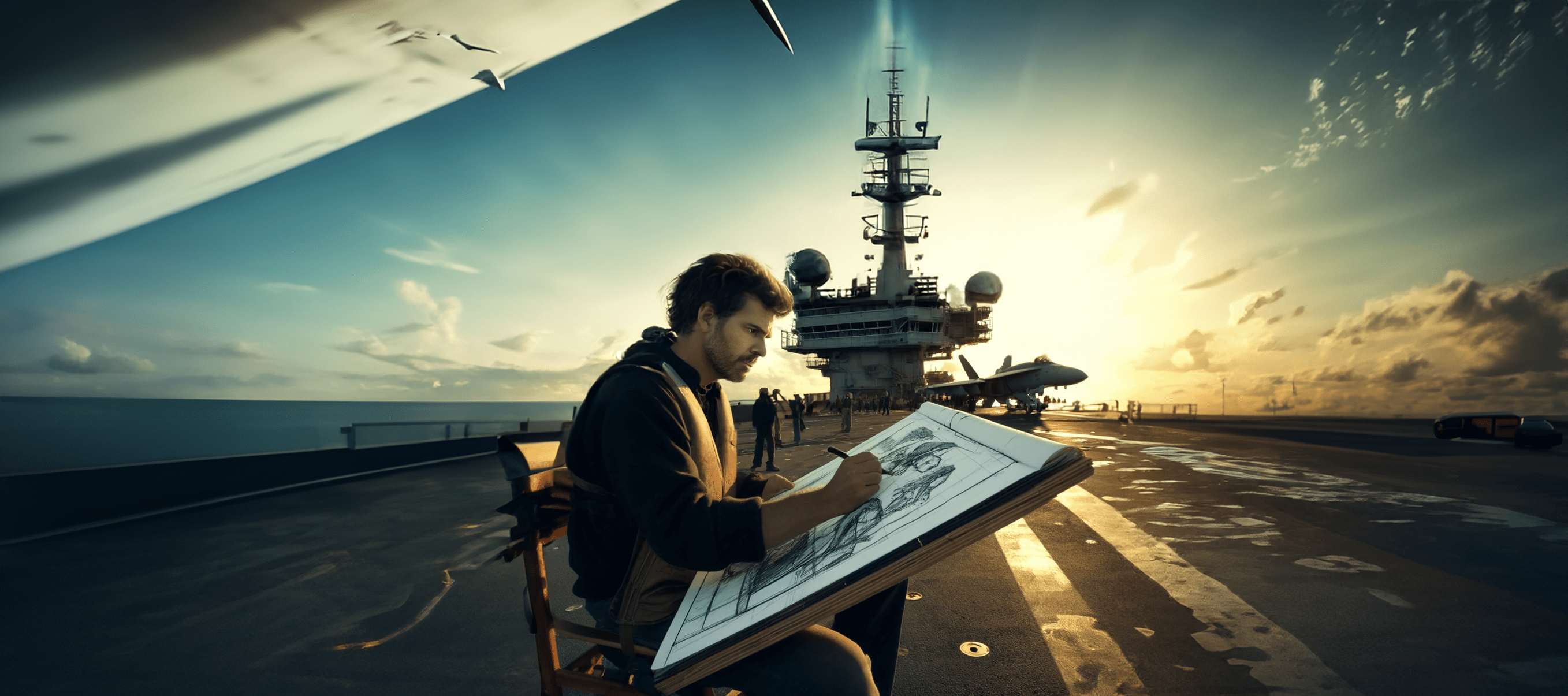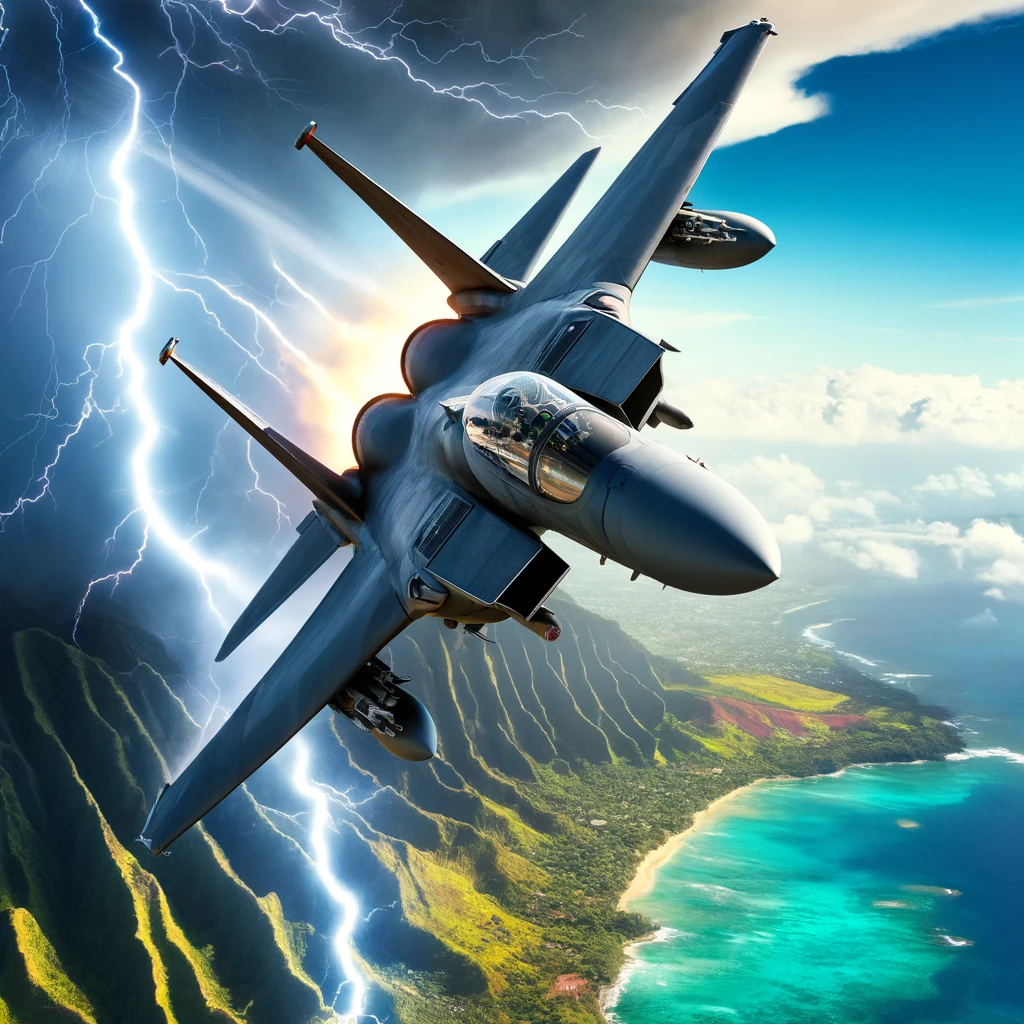Storyboarding onboard the USS Lexington. (Filming for 2001’s Pearl Harbor took place on the carrier in Corpus Christie Bay.)
Imagine me, perched on the edge of an aircraft carrier in the warm, salty air of Corpus Christi Bay, sketchbook in hand and surrounded by the majestic hustle of military precision and sea-sprayed aviation. Not your usual film setting, but then again, this isn’t your usual film project—we’re dabbling in a Top Gun spin-off pitch, and the stakes are as high as the fighter jets zooming overhead.
Starting with the Basics: The Script Outline
There I was, with my trusty sketch pad propped against my knees and a stack of reference materials (script pages, character bios, technical manuals for jet engines) flapping in the coastal wind. Laying out the script outline felt less like work and more like planning an intricate, high-speed adventure. It was me, my pad, a pencil on a chair in a crazy fantastic place working on an insane job.
Here’s how I broke it down, simplifying my usual chaos into clean, efficient bullet points:
- Who’s involved? Pilots, mechanics, a couple of daring journalists.
- What’s their goal? To not just fly, but to outmaneuver an impending storm—literally and metaphorically.
- Where’s the tension? In the cockpits, on the radio frequencies, between old rivals.
- Scene endings? Quick, punchy, like the afterburner of a jet—leave ’em wanting more.
- And so, with a less dramatic flair but an equal measure of enthusiasm, I mapped out the movie’s skeleton. It was straightforward, functional, with just enough spice to keep things interesting.
From Paper to Reality: The Storyboard
Next up, the storyboard. Imagine a flurry of pages, each with a rudimentary sketch of fighter jets crisscrossing, characters arguing with passionate gestures, and storm clouds gathering ominously. Remember, it’s your imagination. There is always time to edit out the crazy shit in the end.
Scene Visualization: I needed to figure out how to film on an actual moving ship. Which angles best captured the grandeur of the jets taking off?
Note! Special Effects Needs: Smoke trails, the gleam of sunlight on metal, the splash of waves against the hull.
Camera Angles: Maybe an up-close of a pilot’s intense gaze, or a wide shot that encompasses the whole deck’s choreography.
The storyboard grew under my pencil, a series of comic-strip like panels that told a story of speed, tension, and aerial acrobatics. It was less about the explosive drama and more about the precision and dynamism of military aviation.
Feedback Loop: Collaboration on Deck
When I finally spread out my storyboard on the navigation table (cleared of maps for just a moment), the reactions were mixed—but constructive. A seasoned pilot pointed out unrealistic maneuvers, a cinematographer suggested better angles for the shots, and everyone had something to say about the dialogue.
“Wouldn’t it be cooler if he said this while banking hard left, dodging a lightning strike?” one pilot mused, and I had to agree. Adjusting my sketches and notes on the fly, literally, the storyboard adapted to the real-life inputs of those who would know best. It was collaboration at its most immediate and exciting.
Wrapping Up: Smooth Sailing Ahead. As I close this chapter, the storyboard laid out neatly (well, as neat as it can get in a windy environment), I’m reminded why I love this job. It’s about bringing visions to life, yes, but it’s also about the process—meeting people, learning from them, and making something great together.
So, here’s to less drama but more fun—on an aircraft carrier, with a sketchbook, and a story to tell. Who knows? Maybe this version of Top Gun will fly a little closer to reality.


